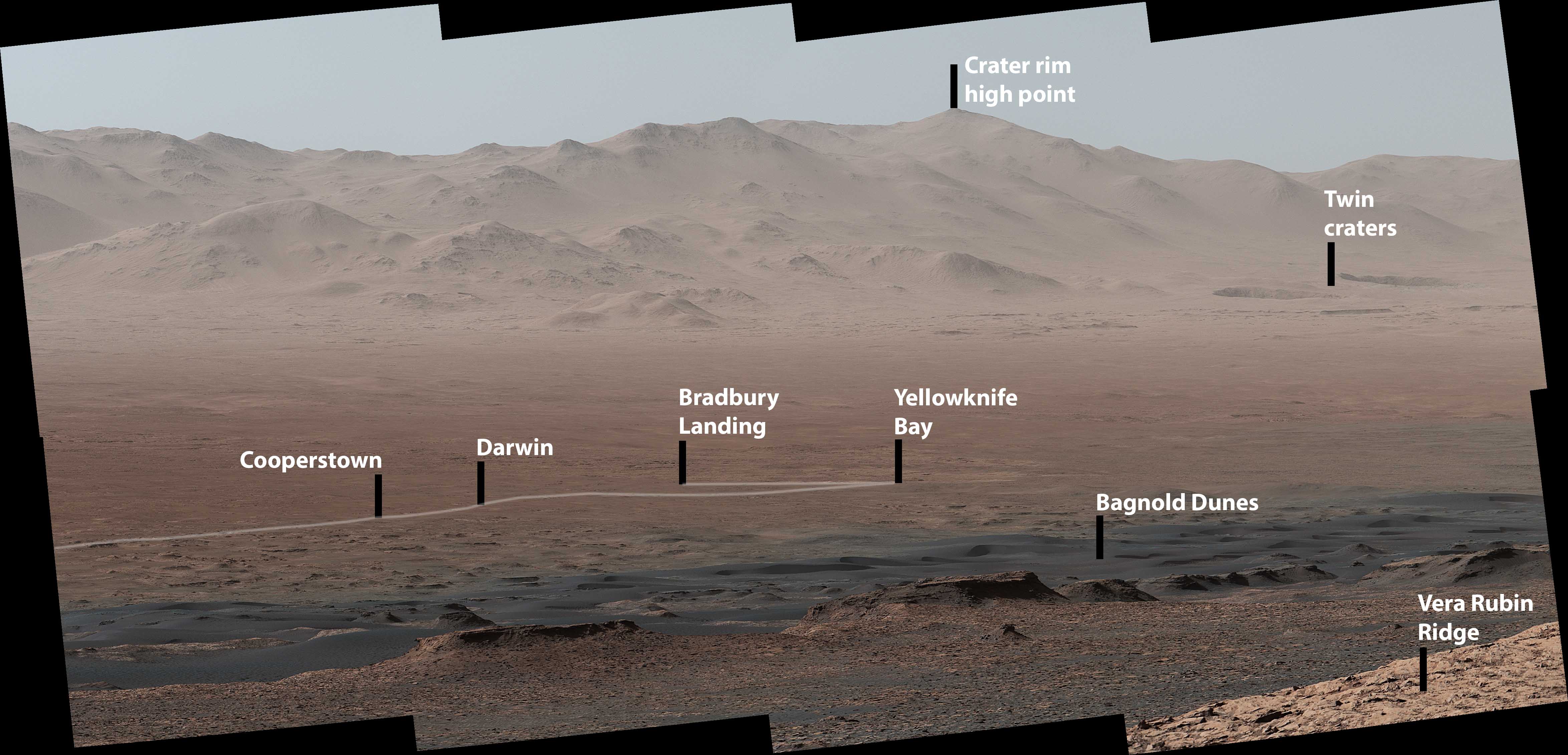This MastCam panorama shows a view back to our mission’s start at Bradbury Landing, 18 km distant and 330 m below our current vantage point on Vera Rubin Ridge. The team is meeting at Caltech in Pasadena to review our results at Vera Rubin Ridge and plan the next phase of driving up Mt Sharp, into the Clay-rich unit. One of the key issues is our drill, and it looks like it will be back in operation before we leave the ridge. That’s good news because it means we can get X-ray diffraction analyses to identify mineral species – notably clay and iron oxides – and so work out why more ancient groundwater passed through this part of Mt Sharp, oxidising it in the process. The range in composition and state of hydration that clay minerals record make them essential mineralogical tools to work out the palaeoenvironment of Mars.
At the same time we are naming our rock targets with Scottish names. My favourites so far are from the ancient Devonian lake deposits of Northern Scotland and Orkney – Caithness, Stromness, Rousay.

MastCam mosaic of the Curiosity traverse, taken from 300 m up on Vera Rubin Ridge.

 Subscribe to jbridges's posts
Subscribe to jbridges's posts
Recent Comments